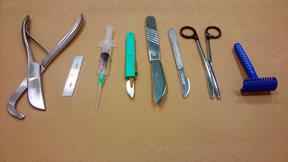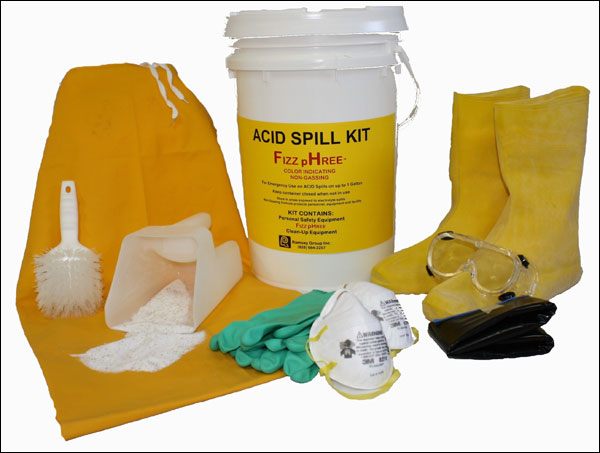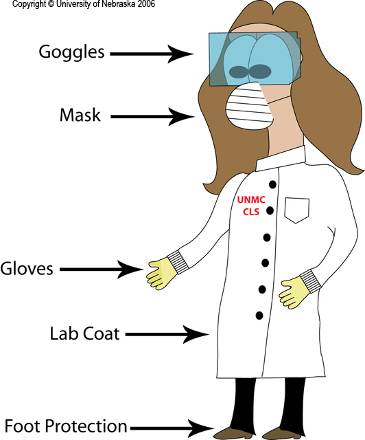Beware! Hazards In Forensic Practice
Introduction
Hazards are a common word related to occupational safety and health in workplace. Hazards can be defined as a potential source of harm or adverse effect on a person or persons.
Category of Hazards
Hazards can come from wide range of sources. General examples include any substance, material, process, practice etc. that has the ability to cause harm or adverse health effect to a person under certain conditions.
Hazards can be classified according to categories as follows:
- Biological – blood or other body fluids, bacteria, viruses, insects, plants, birds, animal etc.
- Chemical – depends on the physical, chemical and the toxic properties of the chemical
- Ergonomic – repetitive movements, improper set up of workstation, wrong posture
- Physical – radiation, high exposure to UV light, temperature extreme, constant loud noise
- Work organizations hazards – stress, violence, workload demand, sexual harassment
- Safety – slipping/tripping hazards, inappropriate machine guarding, electrical hazards, confine space
Potential Hazards in Forensic Practice
Of all the types and categories of hazards listed above, this article only touches on potential hazard in forensic practice. This article only focuses on sharp injuries and chemical spillage. General information and steps that can be taken when this mishap happens will be highlighted.
Sharp Injuries
Sharp injuries are well known risk in the health care sector. Sharps are items such as needles, blades, scissors, razors, lancets, broken glassware and other medical or laboratory instruments that could cause an injury by cutting or pricking the skin. Sharps contaminated with blood or body fluids can transmit disease such as Hepatitis B, C and Human Immunodeficiency Virus (HIV). This transmission risk, put many thousands people who receive it in stress and worry.
When sharps injury happens, there are a few things can be done.
- Encourage the wound to gently bleed, ideally holding it under running water
- Wash the wound using running water and plenty of soap
- Remember:
- Do not scrub the wound whilst washing it
- Do not suck the wound
- Dry the wound and over it with a waterproof plaster or dressing
Under Occupational Health Unit, Ministry of Health Malaysia, if a sharps injury occurs, the personnel involved should inform the Location Supervisor (appointed) immediately (within 24 hours). The Location Supervisor should immediately refer the injured personnel to the designated doctor in the Medical Department for assessment and post exposure prophylaxis if required. The Location Supervisor also needs to fill notification forms and submit to the relevant committees for further action to be taken within 24 hours. These relevant committees involved Quality Unit, Occupational Safety and Health Committee Secretary, Infection Control Team and of course the State Occupational Health Unit. Investigation of the incident will be carried out and all relevant data will be collected, registered and kept for records.
Chemical Spillage
Chemicals are universal material being used in many occupations. Poor management of chemicals can cause accident such as spills, splashes and explosion and can lead to occupational diseases, poisoning and cancers.
Chemical spillage is defined as uncontrolled release of the hazardous chemicals which maybe solid, liquid or gas.
Chemical spillage cleaning must be done by trained personnel. In any situation when this incident happens, while waiting for the trained personnel to arrive, the points below should be done immediately.
- Alert the workers around the area immediately
- Workers should be highly cautious if the spillage involves corrosives, highly toxic or reactive chemicals
- Call for assistance as it could threaten the health of the health care workers, patients and other in the vicinity
- Put up a warning sign to indicate the area where the spillage has occurred. This is to limit access to the area
- And of course, cleaning of chemical spillage must be undertaken by trained personnel
Remember that all chemical spillage should be deemed as dangerous during handling.
- Read the chemical label carefully before proceeding
- Do not inhale or taste chemical
- Use Personal Protective Equipment (PPE) such as goggles, gloves, lab coat, apron when handling chemical.
- Skin that comes in contact with chemical should be washed immediately with soap and water.
It is recommended that all laboratories must be equipped with Chemical Spillage Kit to handle small amounts of low hazard chemical spills. This kit may sometimes vary according to the chemical. In general, Chemical Spillage Kit should consists of absorbents, PPE and clean-up material.
|
Picture 2: Chemical Spillage Kit
|
Picture 3: Personal Protective Equipment
|
Below are roughly the guide steps in handling chemical spillage
- Alert others of the spill
- Isolate the area: use a barrier tape
- Review the spill clean-up procedures recommended in the Chemical Safety Data Sheet (CSDS)
- Open the chemical spill kit
- Wear protective equipment as needed
- Confine spill to small area with chemical absorbent materials
- Acid and base spills should be neutralized prior to clean up
- Collect residue, place in disposal container, and label waste container.
- Place all contaminated PPE into a chemical resistant bag for disposal
- Wash hands
Like other incident involving hazards, under Occupational Safety and Health Notification of Accident, Dangerous Occurrence, Occupational Poisoning and Occupational Disease Regulations 2004, any accidents, dangerous occurrence, occupational poisoning or occupational disease that has occurred in place of work should be notified by the employer to the Department of Occupational Safety and Health (DOSH). The reporting is done using DOSH gazetted forms.
Notes
Hazard comes in any form in all activities. It is preventable and it should be so. Nevertheless, if accidents happen, immediate action and/or the management afterwards are very crucial and it is a responsibility of all people regardless of rank or level. Workers should be equipped with knowledge of hazards so that they are ready and know what to do whenever accidents involving sharp injuries and chemical spillage happen in their workplace.
References
- Canadian Centre for Occupational Health and Safety (COCHS). Hazards and Risk. 2015
http://www.ccohs.ca/oshanswers/hsprograms/hazard_risk.html (Accessed 2015-05-14) - Health and Safety Authority (HAS). Hazards and Risk.2015
http://www.hsa.ie/eng/topics/hazards/ (Accessed 2015-05-14) - Medical Staff Safety and Health Unit, Quality in Medical Care Section, Medical Development Division, Ministry of Health Malaysia. Guidelines on Chemical Management in Health Care Facilities Ministry of Health, 2010
- Occupational Health Unit, Disease Control Division, Ministry of Health Malaysia. Sharp Injury Surveillance Manual. Putrajaya: National Library of Malaysian, 2007
- United States Department of Labor. Occupational Safety & Health Administration.2015 Circle Chat
https://www.osha.gov/dte/grant_materials/fy10/sh-20839-10/circle_chart.pdf (Accessed 2015-05-14)
| Last Reviewed | : | 23 August 2019 |
| Writer | : | Reynold Vicente |
| Accreditor | : | Nurizan bt. Ismawi |
| Reviewer | : | Dr. Khoo Lay See |










